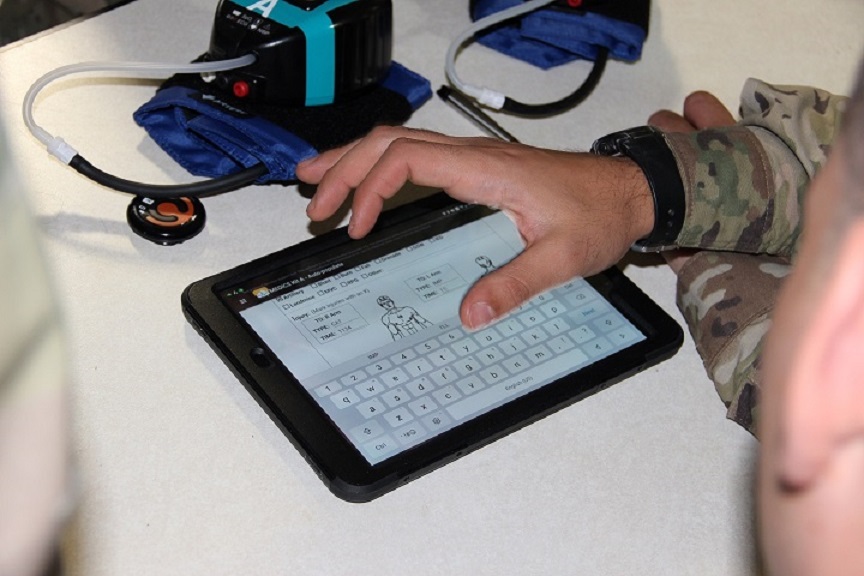This post is also available in:
 עברית (Hebrew)
עברית (Hebrew)
US Air Force is using new wearable medical technology which bring advanced deployed medical capabilities further forward on the battlefield.
Researchers from Wright-Patterson Air Force Base, Ohio, are in advanced developing stages of further wearable medical technology. This type of contemporary med-tech will offer new forms of care in deployed environments, improving care even during medical evacuations, according to csmng.com .
This wearable medical technology is designed to minimize additional burden on medical Airmen, therefore it is small and lightweight. Whether the forces are in a remote area, or aboard an aircraft, this device is suitable for all situations Airmen are potentially prone to meet.
“Wearables provide greater accessibility,” said Dr. David Burch, a research biomedical engineer and the medical technology solutions team lead for the En Route Care Medical Technology Solutions Research Group. “An aircraft has a very tight space and weight limit to maintain performance, and battlefield medics need to carry everything they use. Wearables provide accessibility to the human in a way that is better form, fit, and function.”
One wearable device that achieves that accessibility is a tissue oxygenation sensor, developed jointly with a private company. This small, soft, injectable sensor lets medics determine if a patient is able to be medically evacuated by assessing how well their blood transports oxygen to tissue.
“This sensor makes it easier to get clinical information at the point of injury and throughout the continuum of care,” said Dr. James Christensen, product line lead for Airman Sensing and Assessment, from the 711 HPW’s Airman Systems Directorate. “It improves capabilities while reducing weight, something that is important for both pararescuers and en route patient care.”
Wearable medical technology also allows continuous monitoring of aircrews without adding any bulk or burden. For example, this capability comes in a form of a compression undershirt that can perform several functions while seamlessly fitting under a flight suit.
Called PHYSIO, this undershirt was designed for aircrew and conducts in-flight monitoring of multiple vital signs. According to Christensen, the shirt also provides remote monitoring.
Air Force researchers are absolutely confident that these space-and-life saving, sophisticated devices will have great impact. By making Air Force medics more agile and adding forward medical capability, wearable medical technology improves the readiness and lethality of U.S. Forces.
“Innovations like wearable medical technology open up new modes of operation,” said Christensen. “Some of these capabilities just weren’t plausible in forward locations before. These advancements allow us to do more routine monitoring, do more preventative monitoring that otherwise wouldn’t have been possible, without the light and lean nature of wearable technology.”

























